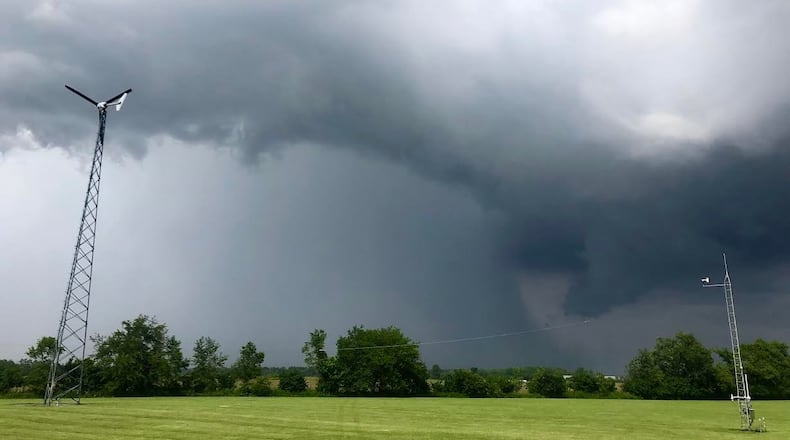This region is in the coverage area of NWS’ Wilmington office, which contains a large portion of southwestern and central Ohio counties.
NOAA suffered sharp cuts as part of the Trump administration’s effort to dramatically reduce federal government employment, with the Associated Press reporting that roughly 10% of NOAA’s workforce would be impacted. This reduction of more than 1,000 employees agency-wide included NWS meteorologists.
Montgomery County Emergency Management Agency director Nedra Havens said she wasn’t aware of any official staffing changes announced at the Wilmington office. Her agency works closely with NWS staff and is still determining what impact national cuts could have on county offices like hers.
The partnership with NWS comes into play particularly before, during and after severe weather events, Havens said.
The Montgomery County EMA participates in regular briefings with NWS meteorologists to help EMA officials assess the timing, severity and potential impacts of high-impact events like tornadoes, winter storms and extreme heat. The EMA also participates in training and exercises hosted by the NWS.
“We rely on their timely forecasts, alerts, watches and warnings to make informed decisions about preparedness and response actions,” Havens said.
What’s the forecast?
NWS last week announced it would be reducing the number of weather balloons it will launch across the country, citing staffing shortages. This impacted 11 locations, none of which are in Ohio.
Experts say this reduction could impact the accuracy of forecasts — and any forecast made available to the public through news organizations, an app or other platforms is almost surely derived from NWS data using weather balloons and other NWS tests.
Weather balloons have been launched daily at roughly 100 locations to help NWS workers gather data about temperature, humidity and more. Results from this process, called sounding, are compiled with data gathered from radar stations and other devices to predict weather forecasts, according to the NWS.
The Wilmington office is the only NWS location in Ohio listed among sounding sites.
NWS did not return a request for comment about how weather balloon reductions could impact its Wilmington office or how the Wilmington office has been impacted by federal funding cuts.
Long term planning
NOAA is responsible for monitoring and forecasting weather and tracking climate trends nationwide. Experts say they fear the shrinking of this federal agency will also impact research capacity for climate trends.
Havens, who leads emergency planning for a county of more than 500,000 residents, said climate change research is essential for understanding how risks can evolve. These risks include intense storms, heatwaves and flooding.
Local emergency management agencies increasingly factor in climate trends into hazard mitigation plans and other strategies used to protect life and property in a community, she said.
The Montgomery County EMA works with a few other local agencies to reduce communities’ vulnerability to flooding or extreme heat.
“We work with partners like the Miami Conservancy District and local city public works departments to reduce vulnerability to flooding or extreme heat events, which are projected to worsen with climate change,” Havens said. “The Miami Conservancy District plays a key role in regional flood protection and monitoring, and their data and modeling help inform many of our mitigation priorities.”
The Associated Press contributed to this report.
About the Author

